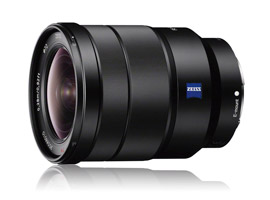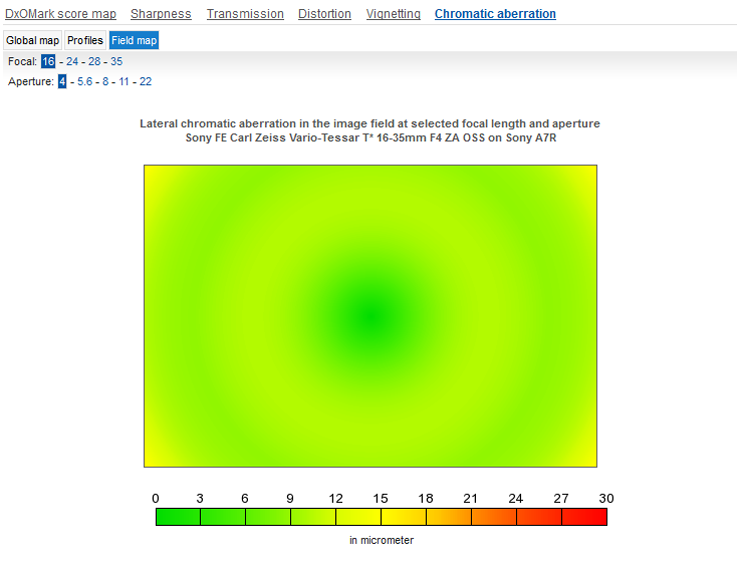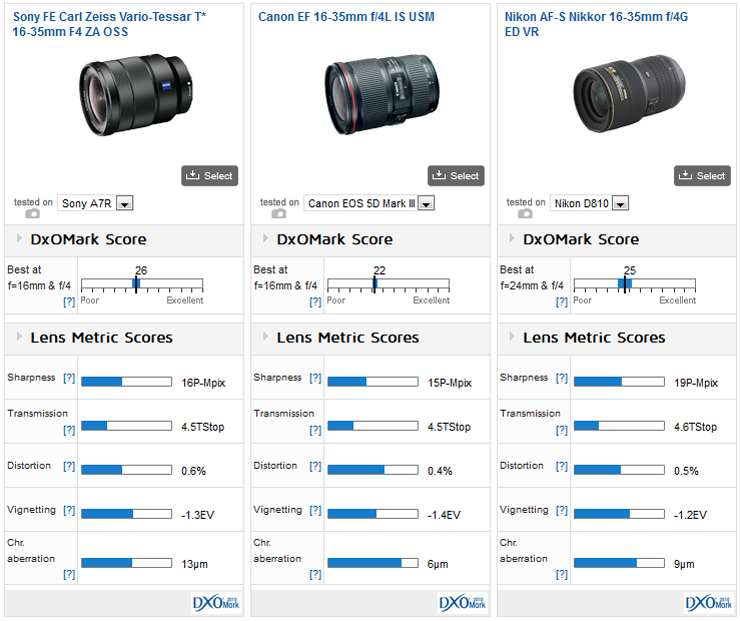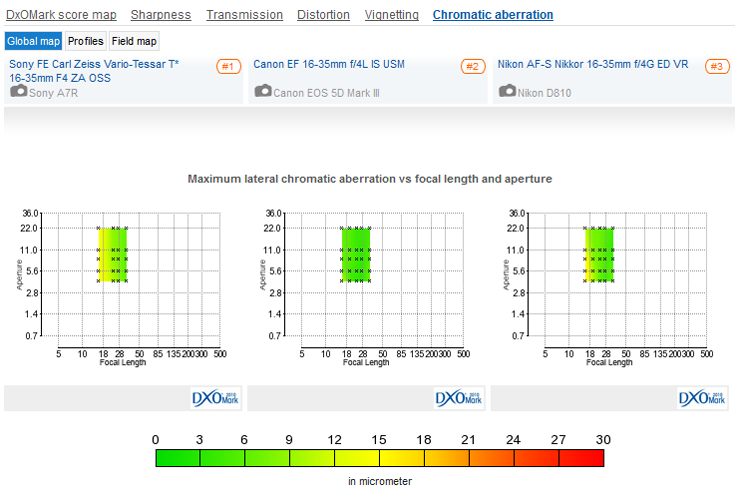Introduction
Announced in the run-up to this year’s Photokina this stabilized ultra-wide is designed essentially for the A7 series bodies but can also be used by the APS-C E-mount models as well, albeit with the corresponding reduction in the field of view. As well as featuring a four-stop stabilizer this new Zeiss branded model adopts an unusually complex optical construction consisting of five aspherical lenses element one bing what Sony describe as an AA (Advanced Aspherical) type which are more convex and are said by Sony to offer improved reproduction and rendering than usual aspheres.
It also features three ED glass elements bringing the total to 12 in 10 groups. It has 7 circular aperture blades, a minimum focus distance of .92’ (0.28m) and a 72mm filter thread. The complex design means the lens is compact at 3.07 x 3.88″ (78 x 98.5 mm) and relatively light in weight at 18.27 oz (518 g). The Sony Vario-Tessar T* FE 16-35mm f/4 ZA OSS is available to pre-order now at $1,349.
With a DxOMark lens score of 26 points the Sony Vario-Tessar T* FE 16-35mm f/4 ZA OSS performs well. A peak sharpness equivalent to 16-Mpix may look a little low based on the 36-Mpix sensor of the Sony A7R but it is a good score for a ultra-wide zoom.
Sharpness is good across the field even at maximum aperture but there’s some field curvature/astigmatism that’s more noticeable at the long focal lengths causing some image degradation.
Distortion is little higher than expected, not so much at the shorter focal lengths but at the longer-end, where the lens has noticeable pincushion distortion from around 24mm onwards. Vignetting and transmission are similar to rivals but considering the optical design (and liberal use of ED glass) chromatic aberration is higher than we would expect of a lens from Zeiss. Chromatic aberration is most noticeable at 16mm, not only in the corners but as a donut-shaped ring in the center of the field but there are also some traces still at 28mm.
Compared with rivals, albeit those designed for DSLRs the Sony performs similarly though as can be seen from the scores, the Zeiss is behind the older Nikkor model in terms of absolute sharpness. Tellingly the D810 adopts a related sensor to the Sony A7R but while the Nikkor looks to outperform the Zeiss in most metrics it’s not the whole story and a closer look at the underlying data is required.
Although the Zeiss has higher levels of CA across the field as a whole, the Nikkor has quite heavy fringing in the corners and more noticeable barrel distortion.
Sharpness isn’t as uniform as the Zeiss either, and particularly at 35mm where it’s restricted to the centers. The new Canon performs well but it’ quite obvious the sensor of the Canon EOS 5D Mk III holds the performance back a little resulting in the lower overall DxOMark score (remember the score is based on the lens and sensor together). It has generally good uniformity (there’s some field curvature at longer focal lengths) and has very well controlled lateral chromatic aberration – by far the best of three even with the less demanding sensor. However, on balance the Sony is ranked just ahead but it’s not the clear win given the price.
Sony isn’t the only manufacturer with an eye on budding moviemakers. The addition of stabilization to this ultra-wide zoom was crucial, not only to appeal to that group (in addition to stills photographers) but also to compete with rivals. Both Nikon and Canon already offer a similar lens. While the new Sony Zeiss offering is likely to be popular, it isn’t that much smaller or lighter than those rival models made for DSLRs. Given that it’s more expensive and that is doesn’t convincingly outperform them either is a pity, but hardly unexpected. Lenses like this are a balance of compromises and overall the Sony isn’t likely to disappoint.











DXOMARK encourages its readers to share comments on the articles. To read or post comments, Disqus cookies are required. Change your Cookies Preferences and read more about our Comment Policy.